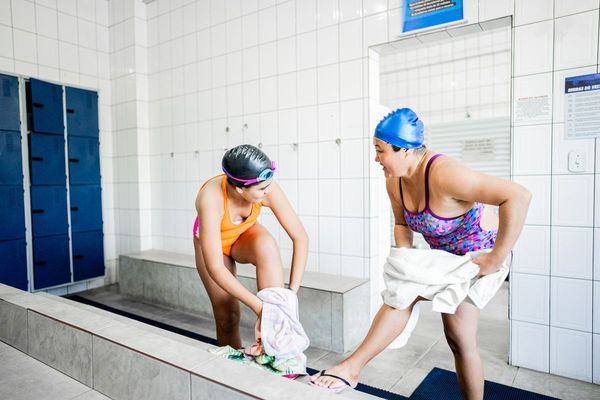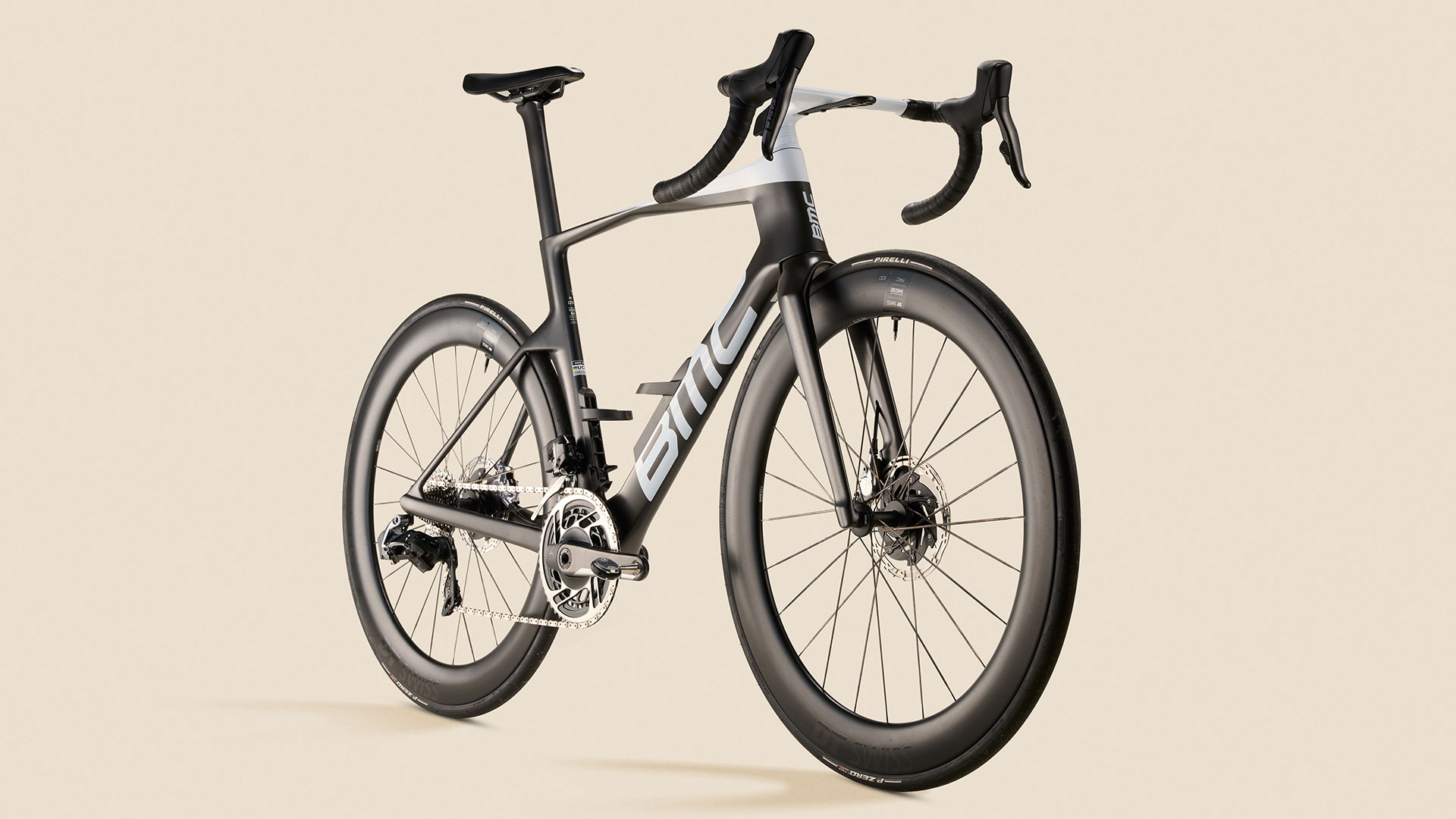
BMC’s pleasingly simple range of road bikes lists just the Teammachine under ‘racing’. The Roadmachine is listed as endurance. The Teammachine range is then split into three groups, the R 01, SLR 01, and the SLR, each available with different builds and specs.

BMC describes the R 01 as ‘the most complete race bike we’ve ever made’ and there is no doubt this Teammachine, with its genealogy stretching back to 2002, is designed purely for racing. Every part of the bike has been streamlined and the attention to detail throughout is impressive. So, if you don't mind spending £13,499, and you’re looking for a bike to carry you to victory in a few local races, read on. If long days out on the bike are more your thing, read on by all means, but keep in mind this bike was not put together with you in mind.
Construction
While a considerable amount of effort, experience, and knowledge went into building this frame - BMC designs, builds, and tests all its prototype frames in its Grenchen HQ in Switzerland - it was the out-front head unit mount that first caught my attention.
A top-of-the-range carbon frame from a well-established manufacturer is always going to impress - plus you know it’s backed by a warranty and customer service - so what gets my goat is when a customer who parts with £10k or more then has to spend £30 on a computer mount. This BMC is the first bike I’ve tested that comes with one. Top marks.
You may think that’s petty, but what this little addition nods to is the attention to detail lavished on this bike. The BMC Aerocore bottle cage on the downtube is another case in point. It sits flush to the tube and keeps the bottle out of the wind. Less aerodynamic, but just as pleasing, is the rubber cover for the stem clamp bolts, which itself is plugged into the clamp so it won’t fall out.
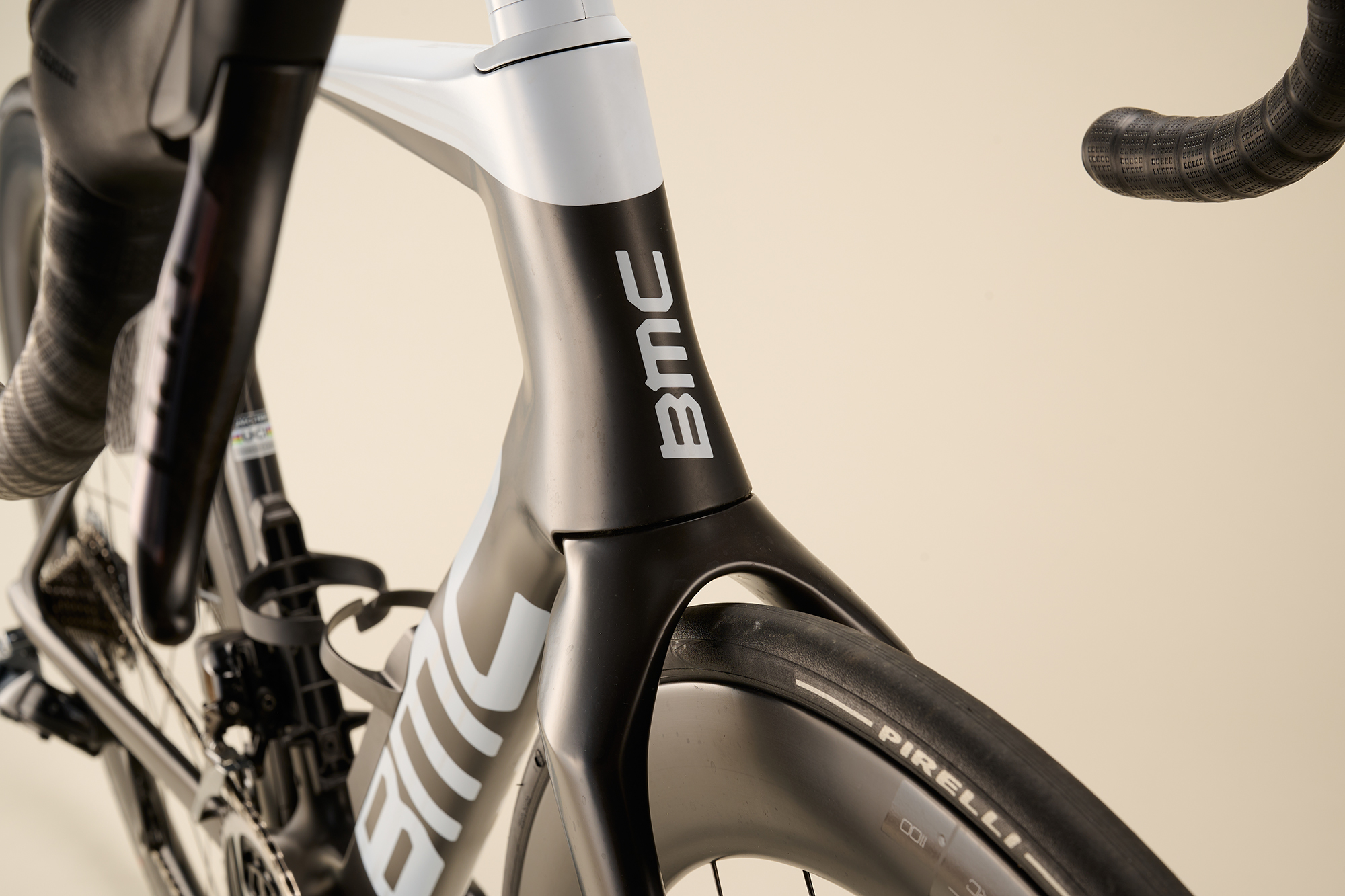
Pleasing details can be found around the frame as well. It comes with the well-used, wind-cheating features of an hourglass headtube, dropped seatstays and truncated seat pin. The stand-out design feature however is the Halo fork. While the Specialized Tarmac has gone back to a tight, slimline design, BMC has gone wider than ever with the widest point measuring 125.5mm. There’s a minimum 9mm of clearance around the 26mm Pirelli tyres and even more on either side of the rims. All to allow better airflow.
Other elements resemble TT frames, like the Mariana bottom bracket, so called because it’s BMC’s deepest ever, and the rear of the seat tube that follows the curve of the rear wheel. The geometry is what you’d expect on a race bike too with a stack on this 54cm frame of 548mm, and reach of 386mm. For comparison a Specialized Tarmac is listed with a 544mm stack and 384mm reach while a Pinarello Dogma comes with a 551mm stack and 385mm reach. All are within millimeters of each other.
So with little to differentiate in the geometry, we’ll return to the details when assessing the ride.
The build
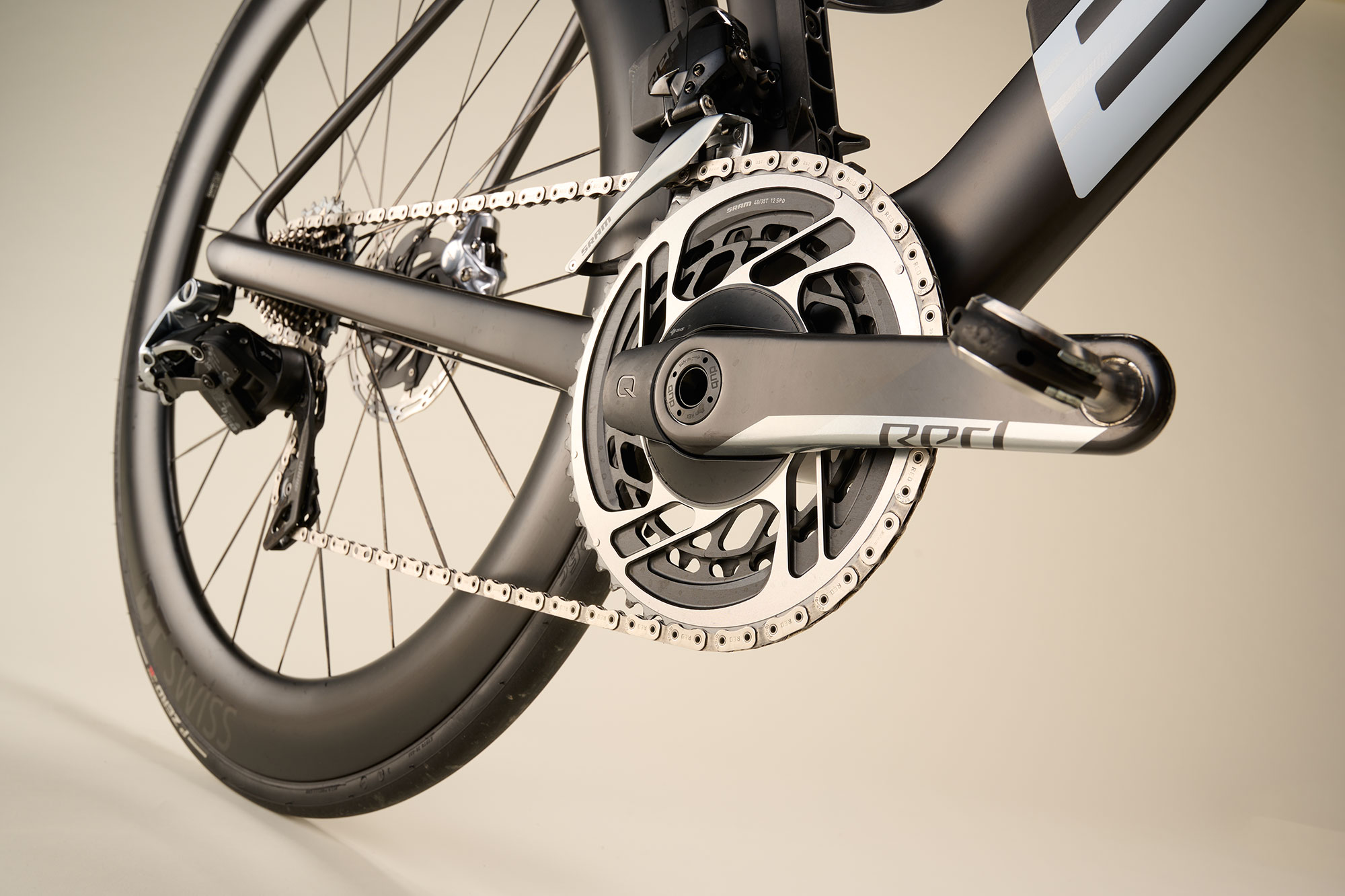
The R 01 comes with wireless SRAM Red AXS 12-speed with disc brake (160mm rotors), a Quarq power meter on the 34/48t chainset and 10-28t cassette. The deep-section wheels are from DT Swiss. These ARC 1100 dicuts come with 24-bladed spokes with two-cross lacing along with ceramic, sealed bearings. Internal rim width measured 20mm which meant our 26mm Pirelli Zeros measured 27mm when blown up to 80psi.
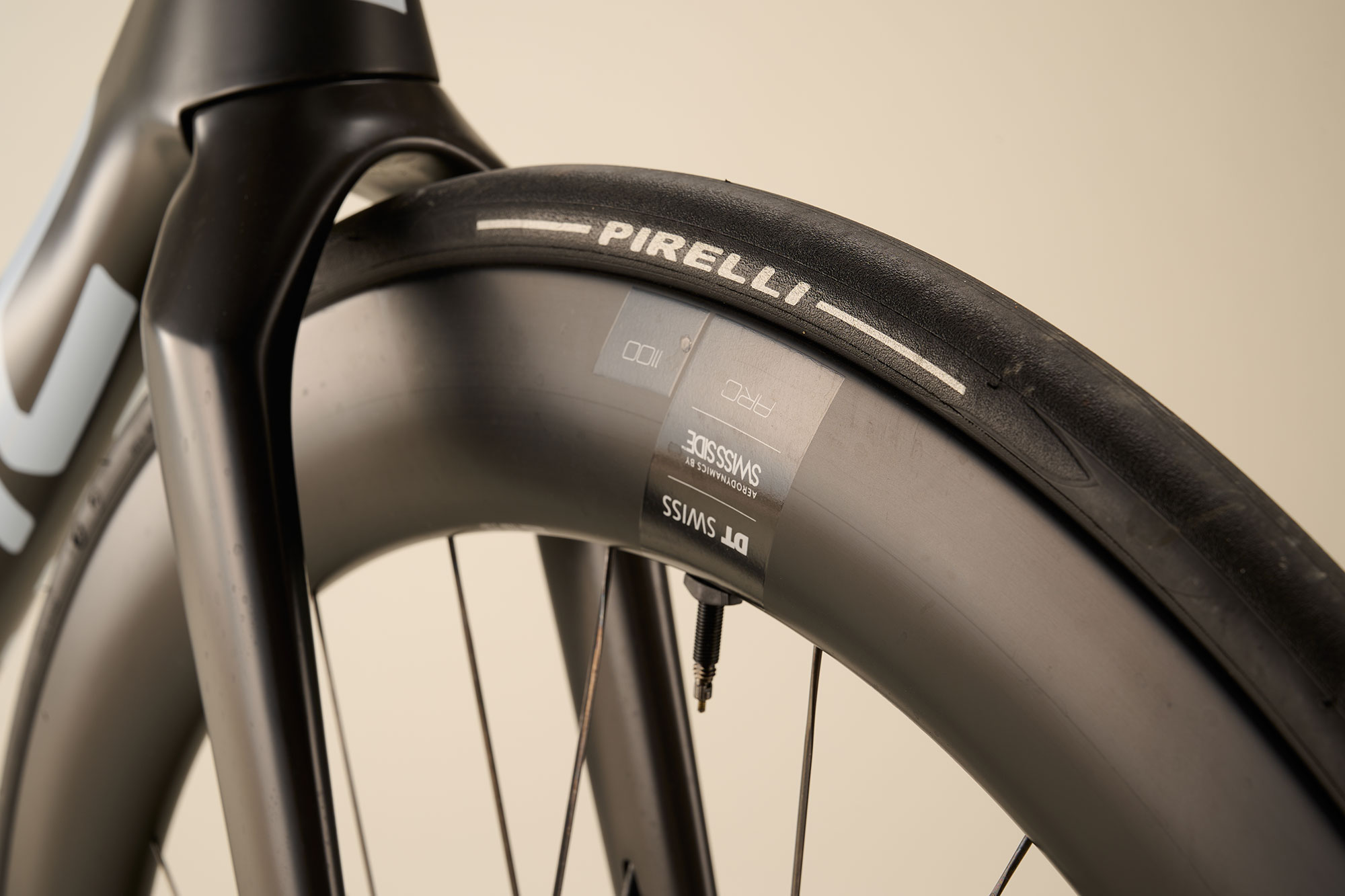
Unsurprisingly, BMC builds the Teammachine with its own finishing kit of seatpost and ICS integrated bar and stem. The bars measure 38cm at the hoods and flare out to 42cm at the drops. The shape means the brake hoods slope gently inwards which sees you naturally drop your forearms down and rest them on the top of the bars. On long straight roads, I did this on autopilot, and the position became quite comfortable the more I got used to it. On the hoods, the width takes a little getting used to, but as soon as you become accustomed, handling is nimble and predictable, instilling confidence on descents.
The Ride
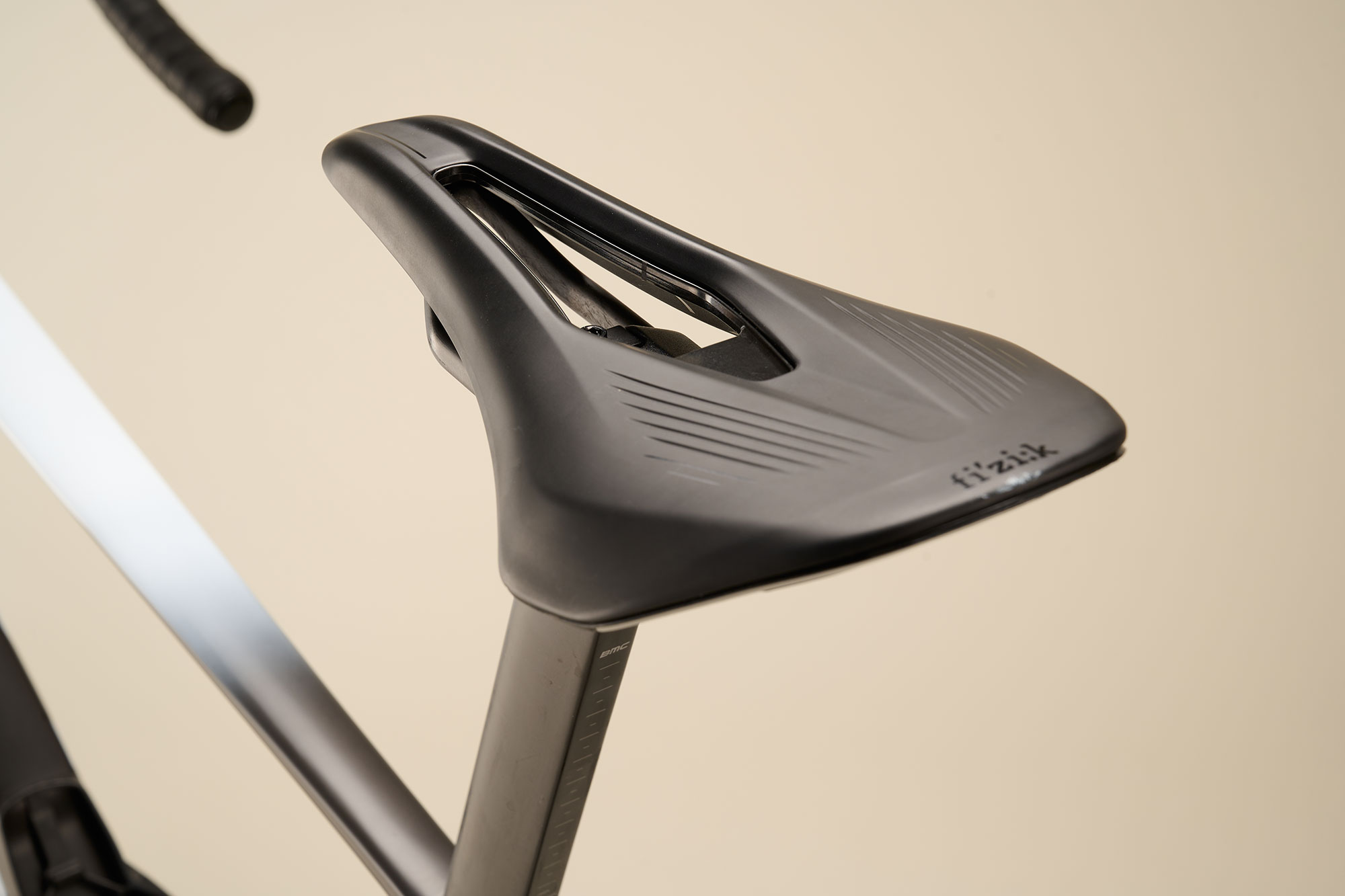
There’s no getting away from it, this bike is not built for rough roads. That’s not a criticism, it’s a fact. It’s just not designed with the small, country lanes that I ride in mind.
While I wouldn’t call myself a hardened rider, I have become accustomed to these roads and how test bikes feel on them. It’s my new normal, sadly. I was therefore taken aback on one ride when I hit a short patch of perfectly laid tarmac. For around seven seconds on a gentle descent I was suddenly floating, I couldn’t even feel the bike beneath me. It was in this brief but glorious moment that I realised what this bike was built for. Perfectly laid, perfectly maintained Swiss roads.
Get this bike onto those and it will simply purr along beneath you, making it feel like you’re riding on a thin layer of air. If the roads around me were all like this I wouldn’t hesitate to recommend the Teammachine for longer rides. Alas, it was just a brief glimpse of riding Nirvana.
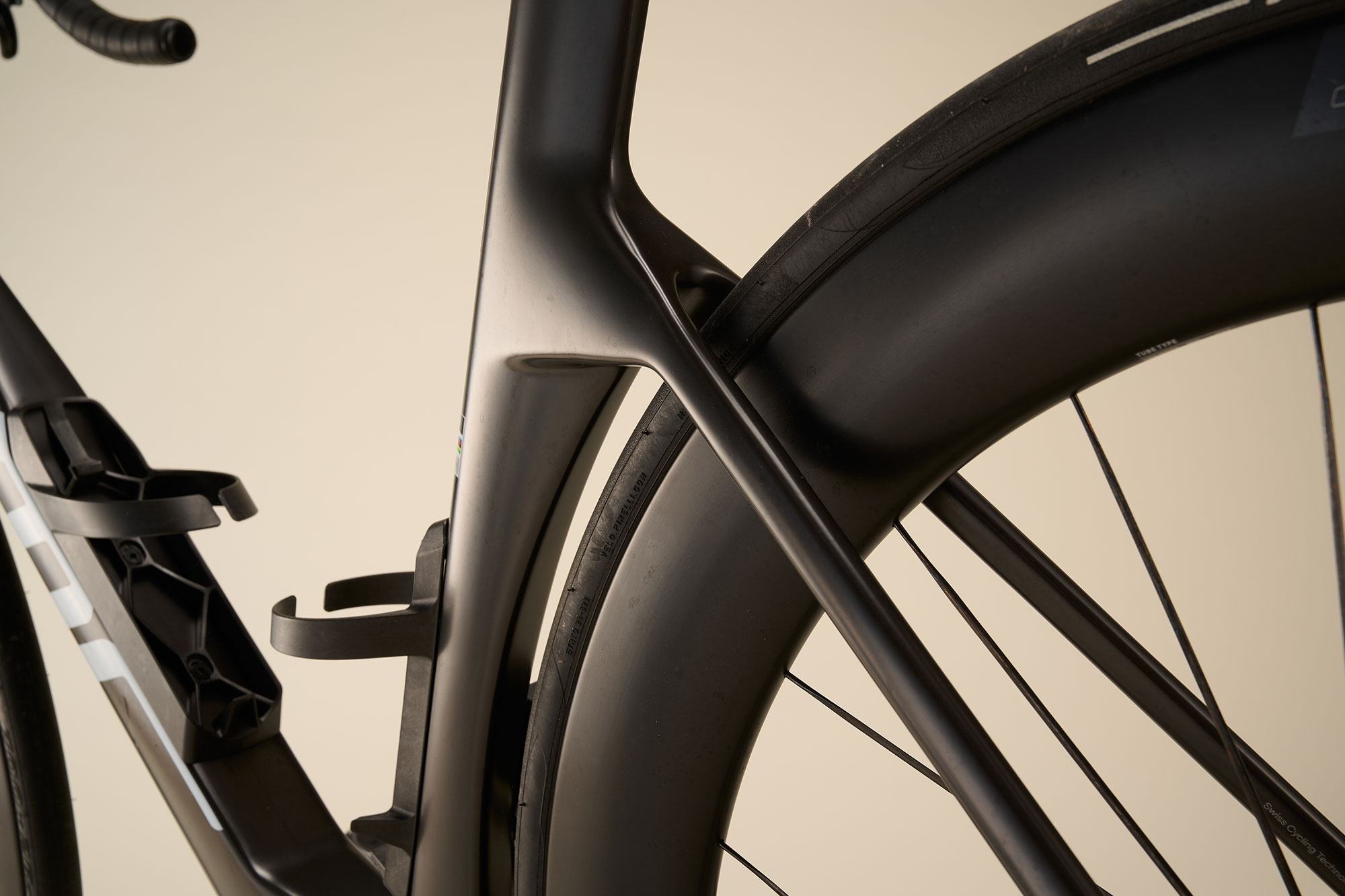
Most of my rides are around one to two hours, and on these, the bike is great fun to ride and comfort is not an issue. It’s fast and responsive (it would be more responsive if it came with 170mm cranks. The 172.5mm cranks it came with are what contributed to a very slight lack of acceleration.) and almost impossible to ride on the hoods and not get in a low tuck position.
It’s perhaps no surprise then that bike came into its own in time trials. After all the frame resembles a TT bike almost as much as it does a road bike. And as it lowers you into a streamlined position the temptation is always there to push on. This is a race bike, designed for those who want to ride hard. If that’s what you’re looking for, and you can afford the price tag, you can’t really go wrong.
Value and conclusion
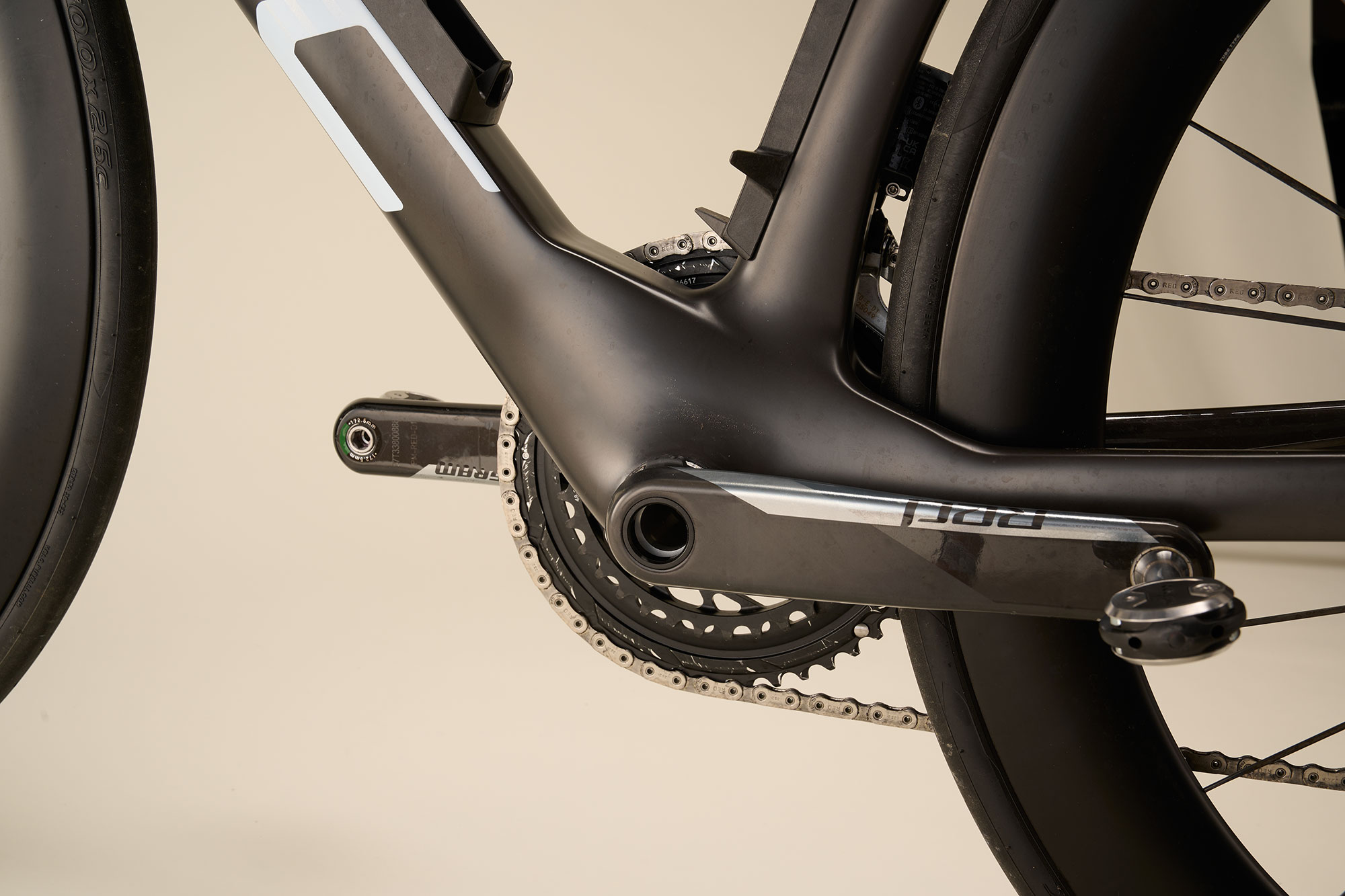
If you've got £13,499 burning a hole in your pocket and you’re looking for a race bike that will allow you to get into a low, narrow and therefore aerodynamic position, the Teammachine is a great option. Every inch of it is built for speed, and no detail has been missed - from the narrow aero handlebars to the downtube that curves into the proprietary bottle cages. Only the rear mech could be accused of sticking out into the wind and ruining the bike’s almost perfect aerodynamic form. What this bike isn’t designed for is epic rides or poor road surfaces roads. If either of those sounds familiar, I’d move on.
Specs
- Frame: Premium carbon
- Fork: Premium carbon
- Groupset: SRAM Red AXS 12 spd, 35/48t, 10/28t inc. Quarc Power Meter
- Stem / handlebars: ICS one-piece
- Seatpost: Premium carbon
- Saddle: Fizik Argo Vento
Wheels:DT Swiss Dicut 1100 (62mm) - Tyres: Pirelli Zero Race TLR SL
